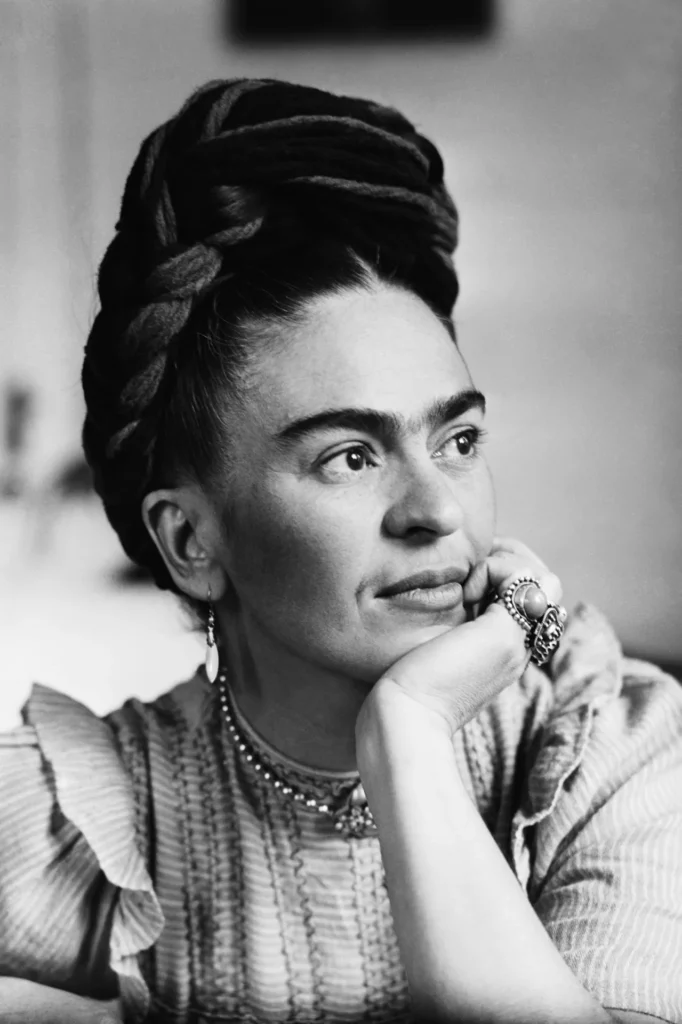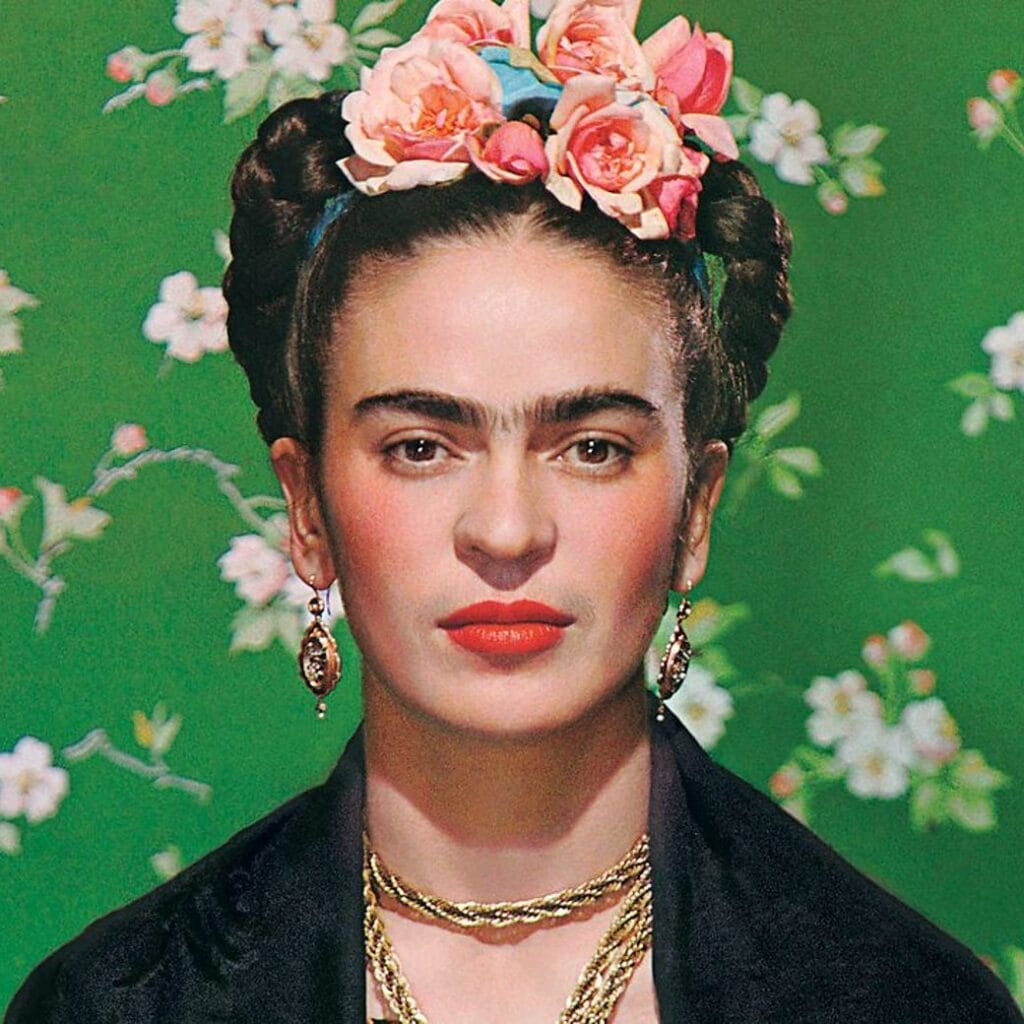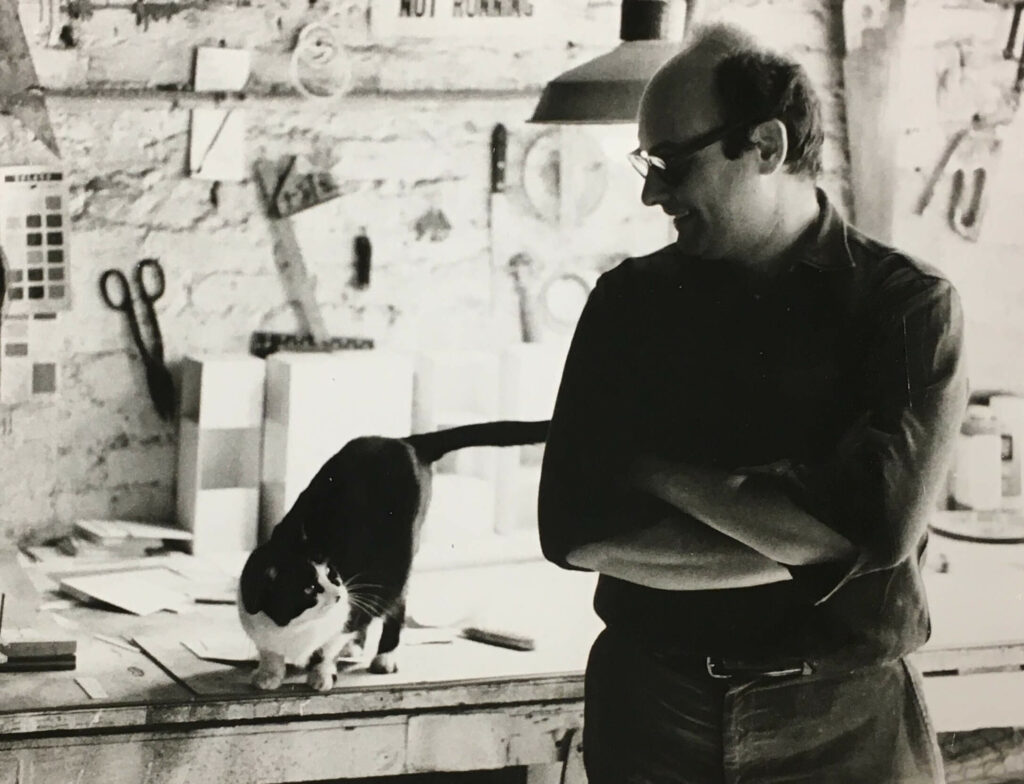Frida Kahlo stands as one of the most profound and influential artists of the 20th century. Her work transcends mere visual aesthetics, delving deep into personal and cultural narratives, making her an iconic figure whose influence reverberates through both modern and contemporary art. Born in 1907, in Coyoacán, Mexico, Kahlo’s life was marked by immense personal tribulation, which she deftly translated into her art. Her unique painting style blends elements of realism, symbolism, and surrealism, creating a visceral experience that enthralls and engages viewers.
Kahlo’s personal history is intrinsic to her artistry. A tragic bus accident in her teens left her with lifelong physical pain and medical complications, an ordeal that seeped into the thematic depth of her paintings. Many of her works are reflective self-portraits that communicate themes of identity, suffering, and resilience, serving as both an artistic and emotional outlet. Frida’s ability to fuse her personal narrative with broader social and political issues has solidified her legacy as a seminal figure in art history.
Moreover, Kahlo’s art has become a vessel for discussions on feminism and the role of women in both art and society. Her unapologetic exploration of female identity, sexuality, and body image was groundbreaking, challenging traditional norms and expectations. Through her vivid, often provocative imagery, she has inspired countless women artists to explore and express their own realities, pushing the boundaries of what is traditionally considered ‘acceptable’ in art.
Frida Kahlo’s indelible mark on the art world extends beyond her paintings; she has become a cultural icon. Her legacy is one of courage, creativity, and defiance, and her work continues to resonate deeply with audiences, making her not just a pivotal artist, but a symbol of enduring strength and artistry.

Early Life and Influences
Frida Kahlo was born on July 6, 1907, in Coyoacán, Mexico, a town that would deeply influence her art and identity throughout her life. Her mixed heritage played an essential role in shaping her artistic lens; she was the daughter of a German father and a mestiza mother, which instilled in her a profound connection to both European and Indigenous Mexican cultures. This duality can be seen throughout her works, where motifs reflecting both worlds coexist harmoniously, yet with striking contrast.
From an early age, Kahlo exhibited remarkable resilience and determination. At the age of six, she contracted polio, which resulted in a misshapen right leg and a lifelong limp. Despite this setback, she was encouraged by her family to remain active and engaged in numerous physical activities, strengthening her spirit but also instilling in her a sense of fighting against adversity. This struggle and triumph over personal challenges would later become a recurring theme in her artwork.
Kahlo’s familial environment provided a tapestry of rich cultural and intellectual stimuli. Her father, Guillermo Kahlo, was a photographer who often took young Frida on his expeditions, where she observed and later adopted his meticulous attention to detail. Additionally, the family’s house was a gallery of diverse art, featuring artifacts and depictions from various Mexican artistic traditions. Her mother, Matilde Calderón, meanwhile, imparted to her a deep spiritual and religious sense, another layer that would influence the symbolic and allegorical dimensions of Kahlo’s future paintings.
These early influences—the cultural mélange of her background, the physical challenges she overcame, and the dynamic intellectual environment of her household—shaped Frida Kahlo’s nascent artistic sensibilities. They laid the groundwork for her unique fusion of personal experience with broader social themes like feminism, identity, and suffering. Before her fame, these formative years in Coyoacán were the crucible from which emerged one of the most distinctive and influential artists of the 20th century, who continues to inspire and resonate with contemporary audiences.


On September 17, 1925, a bus accident irrevocably altered the trajectory of Frida Kahlo’s life. At just eighteen years old, she sustained severe injuries when the vehicle collided with a streetcar in Mexico City. The accident left her body riddled with fractures, including a broken spinal column, a shattered pelvis, and crushed feet. The extent of her injuries required numerous surgeries and forced her to spend months confined to a bed, grappling with both physical pain and emotional distress.
This life-altering experience served as a pivotal moment in Frida’s life, profoundly influencing her art. While bedridden, she sought solace and a creative outlet through painting. Her initial subjects were often self-portraits, as limited mobility confined her reality to the images in her mirror. Over time, her paintings evolved into a complex, visual language that vividly captured her suffering, resilience, and deeply personal experiences.
Frida Kahlo’s work is distinguished by its raw and visceral exploration of pain, both physical and emotional. Her paintings frequently depict themes of brokenness and healing, drawing heavily from her own lived experience. The accident did not merely inflict lasting damage on her body; it imbued her art with a poignant depth that resonates powerfully with viewers. Each brushstroke becomes a narrative of struggle, endurance, and the quest for identity.
The transformation of her suffering into art exemplifies how Frida Kahlo used painting as a form of self-expression and therapy. Her canvases became a space where she could confront and articulate her pain on her own terms. This unique perspective cemented her legacy not just as an artist, but as a symbol of powerful femininity and resilience. Through her vibrant, often surrealistic works, Kahlo challenged traditional norms, offering a groundbreaking perspective on womanhood, pain, and the human condition.
Frida Kahlo’s art is a poignant amalgamation of personal experiences and political ideologies, creating a unique narrative that reflects both her inner world and the broader societal context. Her relationship with the prominent Mexican muralist Diego Rivera significantly influenced her artistic vision. Rivera, known for his passionate political beliefs and grand depictions of Mexican history and culture, played a crucial role in Kahlo’s artistic development. Their tumultuous marriage, marked by profound emotional and ideological exchanges, deeply informed her work. This intertwined narrative of love, pain, and identity is vividly portrayed in numerous paintings.
Kahlo’s involvement in political movements is another critical aspect of her art. She was an ardent supporter of communism, often depicting symbols of Mexican nationalism and socialist ideology in her paintings. Through her art, she expressed solidarity with the working class and indigenous people, reflecting her commitment to social justice. This political engagement is evident in works like “Self-Portrait on the Borderline Between Mexico and the United States” and “Marxism Will Give Health to the Sick,” where she succinctly integrates political motifs with her personal iconography.

One of the defining characteristics of Kahlo’s art is how she used it as a vehicle to comment on social issues. Her painting “My Dress Hangs There” critiques industrialization and the disparity between social classes in the United States, juxtaposing elements of American capitalism with traditional Mexican culture. Similarly, “The Two Fridas” explores themes of identity and nationality, portraying the duality of her mestizo heritage and her experiences as a woman navigating a patriarchal society.
In essence, Frida Kahlo’s paintings offer a profound exploration of how personal tribulations and political fervor can coexist and converse within art. Her legacy endures as a testament to the power of art as a medium for personal and political expression, resonating with themes of feminism, national pride, and social justice.
Self-Portraits: The Mirror of Her Soul
Frida Kahlo, a figure synonymous with the bold, unfiltered expression of personal and universal truths, utilized self-portraiture as a pivotal element of her art. Amongst the most evocative examples of her work, Kahlo’s self-portraits serve as intimate windows into her inner world. These paintings offer an unguarded exploration of identity, selfhood, pain, and resilience—central themes that resonate deeply in her striking compositions. Throughout her relatively brief yet prolific career, Kahlo produced a substantial number of self-portraits, often depicting herself in vivid, surreal, and emotionally charged contexts.
Kahlo’s self-portraits are not mere reflections of her physical appearance; they are profound statements that articulate her personal journey and ideological battles. “The Two Fridas” (1939) is a notable work in which she depicted her dual heritage and emotional state post-divorce from Diego Rivera. The painting juxtaposes two versions of Kahlo, one wearing traditional Tehuana attire with a broken heart and another in a European dress holding an intact heart, connected by veins that mirror her complex identity and emotional fracture. This work palpably conveys her pain and psychological depth.
Another exemplary piece, “Self-Portrait with Thorn Necklace and Hummingbird” (1940), illustrates her enduring pain and resilience. With her somber expression surrounded by symbolic elements—such as a black cat and a monkey—this painting delves into themes of suffering and stoicism. The thorn necklace, piercing her throat, underscores her chronic physical torment, while the hummingbird, often associated with hope and life, adds a layer of ambivalence, reflecting her multifaceted experiences and emotional endurance.
Kahlo’s introspective approach to self-portraiture also includes “Self-Portrait on the Borderline Between Mexico and the United States” (1932), where she grapples with her cultural dichotomy and personal turmoil amidst two contrasting worlds. Her self-portraits are a testament to her unwavering authenticity and ability to transform personal agony into universal art, engendering profound empathy and admiration from audiences worldwide.


Symbolism and Surrealism in Her Work
Frida Kahlo’s oeuvre is a tapestry woven with rich symbolism and surrealistic themes, elements that have cemented her legacy in the annals of art history. Her work often utilizes vivid imagery and dreamlike scenarios, inviting viewers to delve into her complex world of emotional and physical pain, love, and identity. Kahlo’s approach to painting served as a personal diary where she could channel her innermost thoughts and experiences through the canvas.
One of the quintessential examples of this is her painting, The Two Fridas. This piece depicts two versions of Kahlo sitting side-by-side, each representing different facets of her identity. The Frida on the left wears a traditional Tehuana dress symbolizing her Mexican heritage, while the Frida on the right wears a European-style dress, indicating her mixed heritage and the emotional duality she felt. The exposed hearts and the connected arteries in the painting signify her emotional pain and the bond between her different selves.
Another exemplary work that showcases her use of symbolism and surrealistic themes is The Broken Column. Here, Kahlo portrays herself with a split torso, replaced by a crumbling Ionic column, which symbolizes her damaged spine and chronic pain. The nails piercing her body further emphasize her suffering, yet there is a resolute strength in her gaze, reflecting her enduring tenacity.
Kahlo’s use of surrealism can also be seen in her painting What the Water Gave Me. This work is a medley of symbolic images floating in a bathtub, depicting scenes from her life and Mexican folklore. The work uses a dreamlike scenario to portray the artist’s inner turmoil and external struggles.
Incorporating elements of symbolism and surrealism, Kahlo’s art transcends the usual boundaries of painting to convey profound, universal themes. Her unique ability to communicate through symbols and surrealistic elements has not only shaped her distinctive style but also cemented her position as a revolutionary figure in art, feminism, and the representation of women’s experiences.

The Feminist Icon: Frida’s Impact on Women in Art
Frida Kahlo has ascended as an imperishable feminist icon, significantly influencing women in the domain of art. Her remarkable contribution to feminist art lies in her unwavering portrayal of female experiences and challenges to conventional gender roles. By spotlighting her lived realities, such as physical suffering and emotional pain, Kahlo presented a vivid exploration of womanhood that had seldom been seen in mainstream art. This endeavor not only elicited empathy but also amplified voices that had often gone unheard in the patriarchal art world.
Moreover, Frida Kahlo’s bold depiction of the female form served as a revolutionary act of defiance against rigid societal norms. She was unapologetically transparent in her autobiographical paintings, often illustrating herself in a manner that rejected traditional beauty standards. By doing so, she reclaimed the female body from the male gaze, fostering a sense of empowerment that resonated deeply with women who found both inspiration and solace in her art. This defiance against normative constraints also fostered a broader conversation about female autonomy, body image, and identity.
Additionally, her work catalyzed the feminist art movement, serving as both a locus of inspiration and a pedagogical guide for future generations of female artists. The authenticity and raw emotion in her paintings have propelled the feminist agenda forward, emphasizing the need for greater representation and equality in the arts. Women artists today reference her legacy as a continuous source of motivation to challenge entrenched gender biases and to advocate for the celebration of diverse female narratives within the artistic landscape.
Ultimately, Frida Kahlo’s legacy transcends her own artistic oeuvre, rendering her an enduring symbol of strength and resistance. Her art, imbued with profound personal and political significance, continues to inspire and empower women, affirming her status as an iconic figure in the feminist art movement.




A Continuing Influence
Frida Kahlo’s impact on the art world and popular culture endures, illustrating the profound and enduring legacy she left behind. Her mastery of painting, combined with a candid exploration of deeply personal themes, forged a unique artistic vision that transcends time. Kahlo did not merely create art; she carved a space for introspective, emotive storytelling, making her a pivotal figure not only in art but also in discussions around gender, identity, and social justice.
In contemporary art, numerous artists draw inspiration from Kahlo’s bold expression of personal and political themes. Her style, marked by vibrant colors and symbolism, continues to resonate with a new generation of painters seeking to break conventional boundaries and explore issues of identity and feminism. This broad influence is not confined to the visual arts but extends into literature and film, where Kahlo’s life and work are frequently explored and celebrated. Works such as the 2002 biographical film “Frida” showcase her multifaceted persona, bringing her story to a global audience and underscoring her role as a feminist icon.
Kahlo’s influence thrives through countless exhibitions and retrospectives around the world. Major museums and galleries feature her work, ensuring her artistic legacy remains accessible and relevant. This ongoing interest often fuels collaborations and special shows, attesting to the widespread admiration and scholarly interest in her oeuvre. Exhibitions such as “Frida Kahlo: Making Her Self Up” reveal the intricacies of her creative process, deepening public appreciation for her contributions to art and culture.

Moreover, Kahlo’s work continues to inspire activists and advocates for women’s rights. Her unapologetic representation of her suffering and resilience mirrors the struggles of many, providing a powerful symbol of strength and independence. As an artist and a woman challenging societal norms, Kahlo’s legacy transcends her paintings, influencing contemporary dialogues on women’s roles and rights globally.
Frida Kahlo’s indelible mark on the art world and beyond signifies more than an artistic achievement—it is a testament to her resilience and unwavering spirit. Through her paintings, personal story, and the continuing advocacy for her vision, Kahlo’s legacy remains a beacon of inspiration for artists, activists, and thinkers alike.






